You’re not alone. But thanks to innovative products, even a “problem” basement can be transformed into dry, comfortable living space.
“Of course it’s wet down there. It’s a basement.”
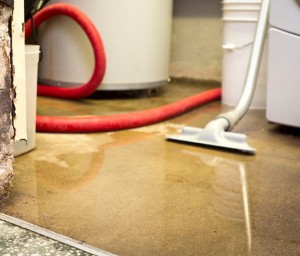 You’ve probably heard this kind of response to basement moisture. It’s inevitable. A damp basement is what to expect when you have wet soil, masonry that naturally absorbs and releases moisture and a construction process that leaves gaps and cracks in the foundation.
You’ve probably heard this kind of response to basement moisture. It’s inevitable. A damp basement is what to expect when you have wet soil, masonry that naturally absorbs and releases moisture and a construction process that leaves gaps and cracks in the foundation.
As it turns out, all the conditions mentioned above might easily apply to your basement. But that doesn’t mean a dry basement is an unattainable goal. Today we have the technology to transform a wet basement into a dry one and keep it that way. The most effective basement waterproofing techniques were only developed after other products and treatments were found to be unreliable. Here’s a short history of how it happened…
A giant lab for basement waterproofing experiments
The building boom that began after World War II and continued for the next 40-some years created a huge opportunity to test different basement waterproofing techniques. Some of these postwar houses were built on slabs and crawl spaces. Others had basement foundations but were built on well-drained, “high-and-dry” sites. But that still left millions of basements built in wet, low-lying areas where hydrostatic pressure could wreak havoc on below-grade space.
The first line of defense against water intrusion took the form of various coatings applied to the exterior of foundation walls. But most of these treatments quickly became known as “damp proofing” because they failed miserably at actually waterproofing the basement. In short, too many things could go wrong with exterior coatings and membranes (aka “positive side” waterproofing).
- Exterior foundation drains stopped working because they got crushed or became clogged with silt and plant roots.
- Sharp stones and gravel poked holes in the moisture barrier as soil was backfilled against the foundation.
- In other cases, hydrostatic pressure built up enough to drive groundwater into the basement through the crack between the foundation wall and floor.
Attempts to move the waterproof barrier to the interior face of the basement wall (“negative side” waterproofing) proved to be equally unreliable. Even when “waterproof” paints managed to hold back water rather than bubbling and peeling off basement walls, the build-up of water pressure was sufficient to turn even the smallest gap or crack into a major leak.
And the winner is…
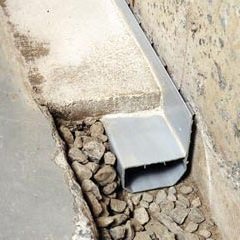
More reliable than a moisture barrier. The patented WaterGuard® drain system (shown above, during installation) is designed to capture water that leaks through basement walls and along the wall-floor joint. The interior drainage system brings water to a sump pump that automatically pumps water outside. Also shown below is a basement dehumidifier that drains into the sump pump.
Instead of attempting to fight thousands of pounds of water pressure with a thin coating or membrane that has to function perfectly, why not relieve the water pressure with a system of drains connected to a sump pump?
The WaterGuard® interior French drain system developed by Basement Systems is an excellent example of an “active” waterproofing system that works with water pressure instead of against it. Damp proof coatings and moisture barriers can still do valuable work by limiting the amount of ground water that seeps into foundation walls. But these treatments should just be the first line of defense, rather than the final one.
WaterGuard drains are designed to capture water that leaks through walls as well as water that might otherwise leak into the basement along the floor/wall joint. The drainage system won’t clog because it’s located atop the wall footing, away from soil, silt and plant roots. The drain lines convey water to a sump pump that automatically pumps the water outside. Advanced sump pump systems with features like battery backup and secondary pumps provide extra insurance that the basement will stay dry even in extremely wet weather and during power outages.
For homeowners who want to go further towards creating “above-grade” conditions in the basement, it’s possible to install a dehumidifier that takes moisture out of basement air.
So what’s in your basement? If you’ve got a moisture problem –whether it’s standing water or just high humidity– don’t settle for the old-school explanation.
Today we have the products and the know-how to make a wet basement dry and keep it that way.

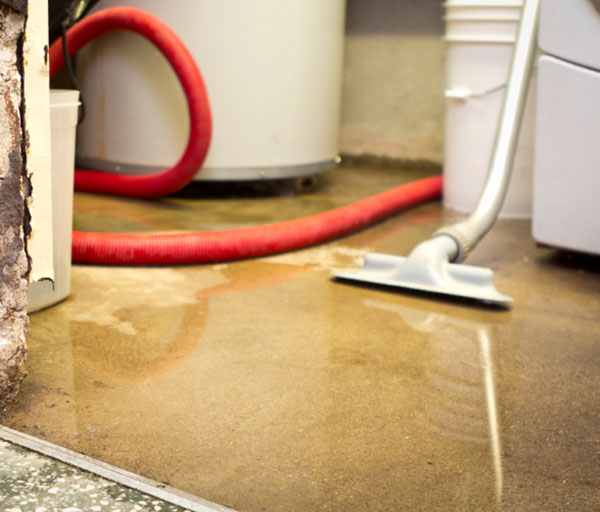
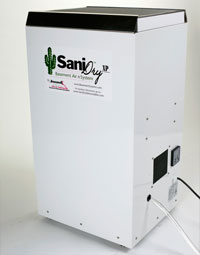
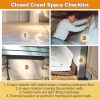

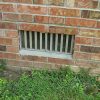
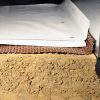
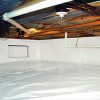

You can fix moisture problems in your basement. Moisture problems happen and they happen all to often. I suggest talking to a professional about waterproofing your basement and what you can do to prevent water damage.
What about the fact that the footer is a level surface? I have a big basement and water would need to travel over 100ft to reach my sump. That pipe is only an inch or two below my concrete. The pipe can’t drain completely dry if it is a level pipe. Or what if my footer is poured just a small amount out of level so the water runs AWAY from my sump? Also, if this drainage pipe sits on top of the footer; wont my footers be completely submerged in the water table with no functioning drainage to dry them? Seems to me placing a traditional pipe next to the footer in a thick layer of gravel as a filter would be a far superior option.